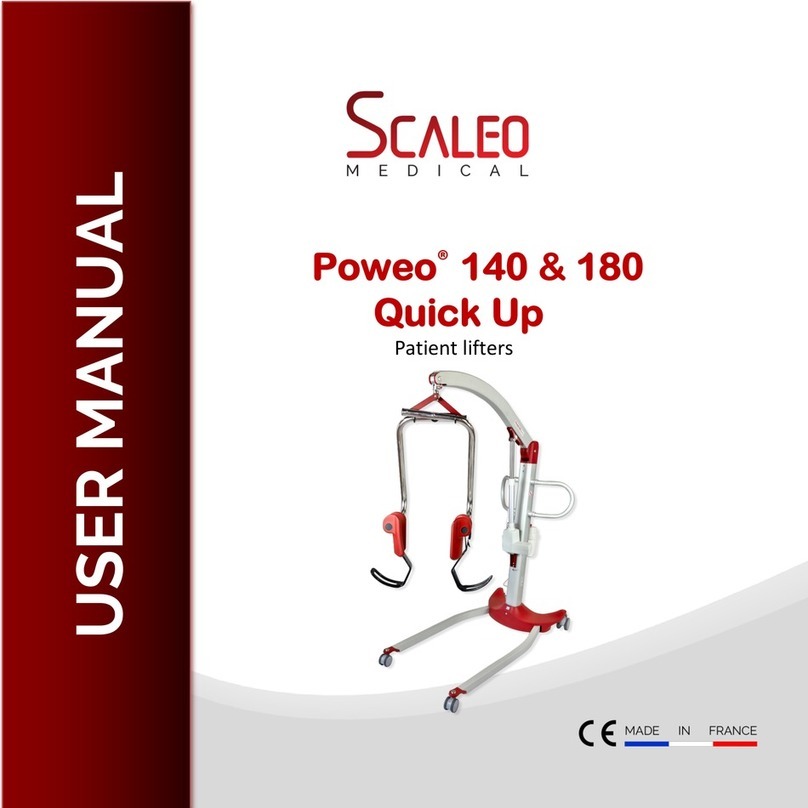
3 DOMU124_EN_v2_20221206_Poweo® 300 User manual
Warning and safety instructions
This User manual contains important safety instructions and information concerning the use of
the Poweo® 300 patient lifter. Carefully read the manual before using the lifters.
The Poweo® 300 references S16050 or S16051 , depending on the type of suspension : 4-points
SLS or electric tilting suspension.
For the installation and use of certain accessories such as the tilting suspension, , please refer to
the section of this manual devoted to it.
The Poweo® 300 is designed and manufactured in order to safely transfer patients up to
300 kg. Beyond this weight, do not use this lifter. Contact SCALEO Medical, for advise on
the best lifter that satisfy your transfer needs.
When using a Poweo® with a stretcher, a caregiver should be dedicated to control the
position of the stretcher, in order to avoid any undesired movements of the patient during
the transfer. The best solution is to use a tilting suspension that allows to finely adjusting
the tilting angle.
In order to use the Poweo® accessories: Scalis® weighing system, transfer slings,
stretchers, please refer to their specific User manuals.
The slings recommended for the Poweo® patient lifters are the SCALEO Medical slings.
They have been specifically developed for the suspensions of the Poweo® patient lifters. It
is your responsibility to ensure that the slings used are compatible with the lifter: the
manufacturer of the sling must have carried out tests according to standard EN 10535
(weight resistance, resistance of fasteners, and length of loops) ensuring the safety of the
assembly and clearly indicate the compatibility of its sling with the lifter in its
documentation. If this is not the case, do not use the sling in combination with the lifter:
the patient could fall and be seriously injured. SCALEO Medical refuses any liability in the
case of an incident while using slings other than those specifically made for their lifters.
Torn, cut, frayed or broken slings can fail, resulting in serious injury to the patient and/or
to the user. Only use slings in good condition.






























